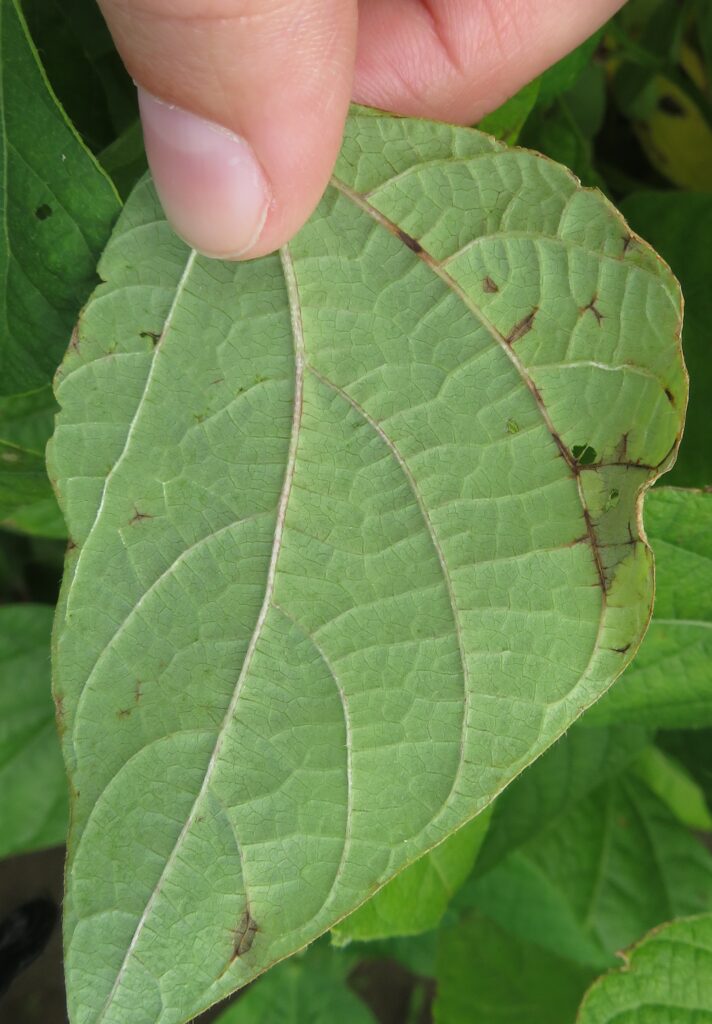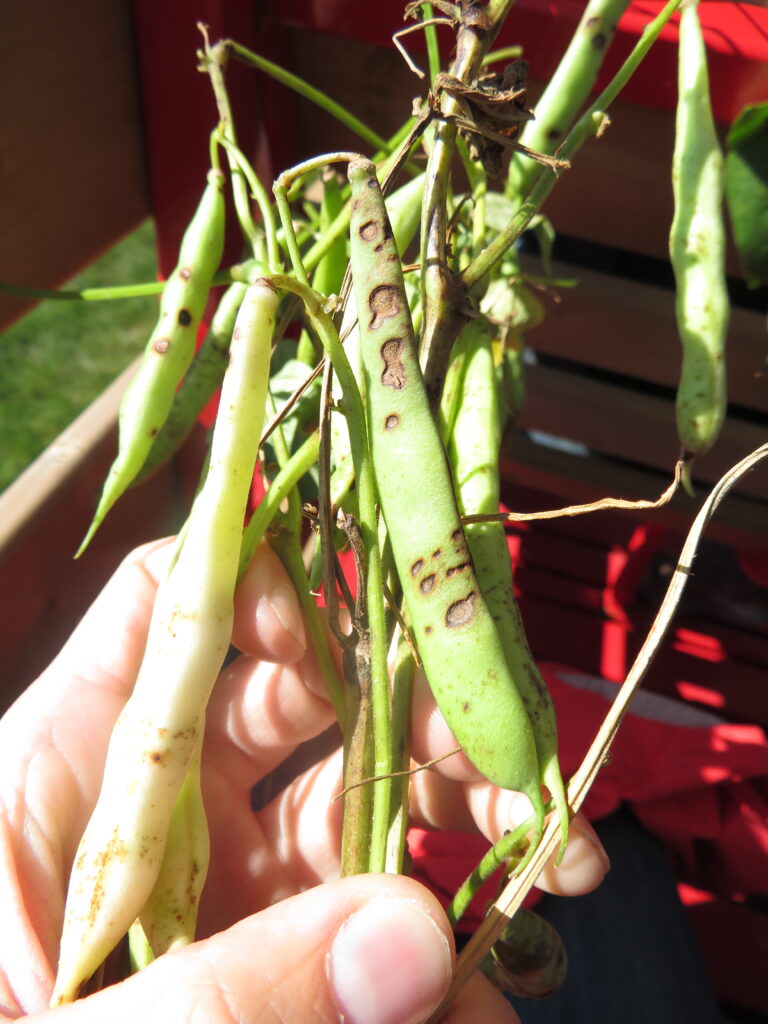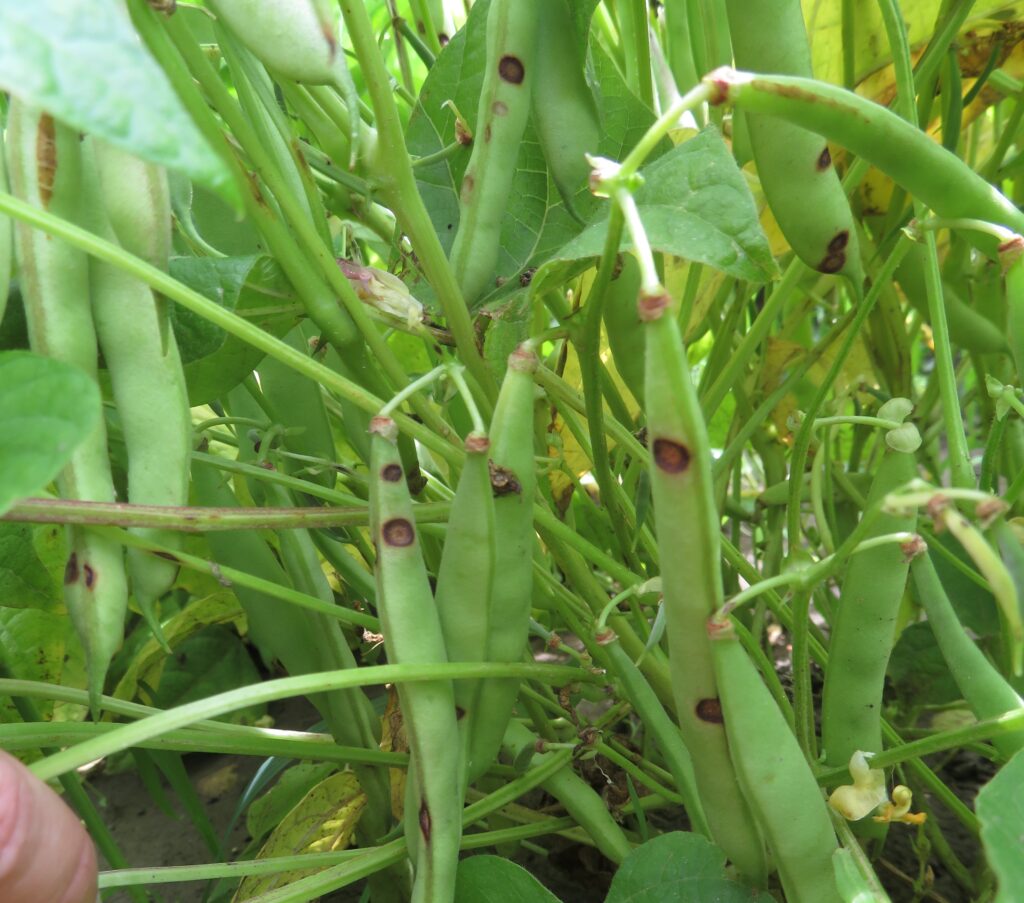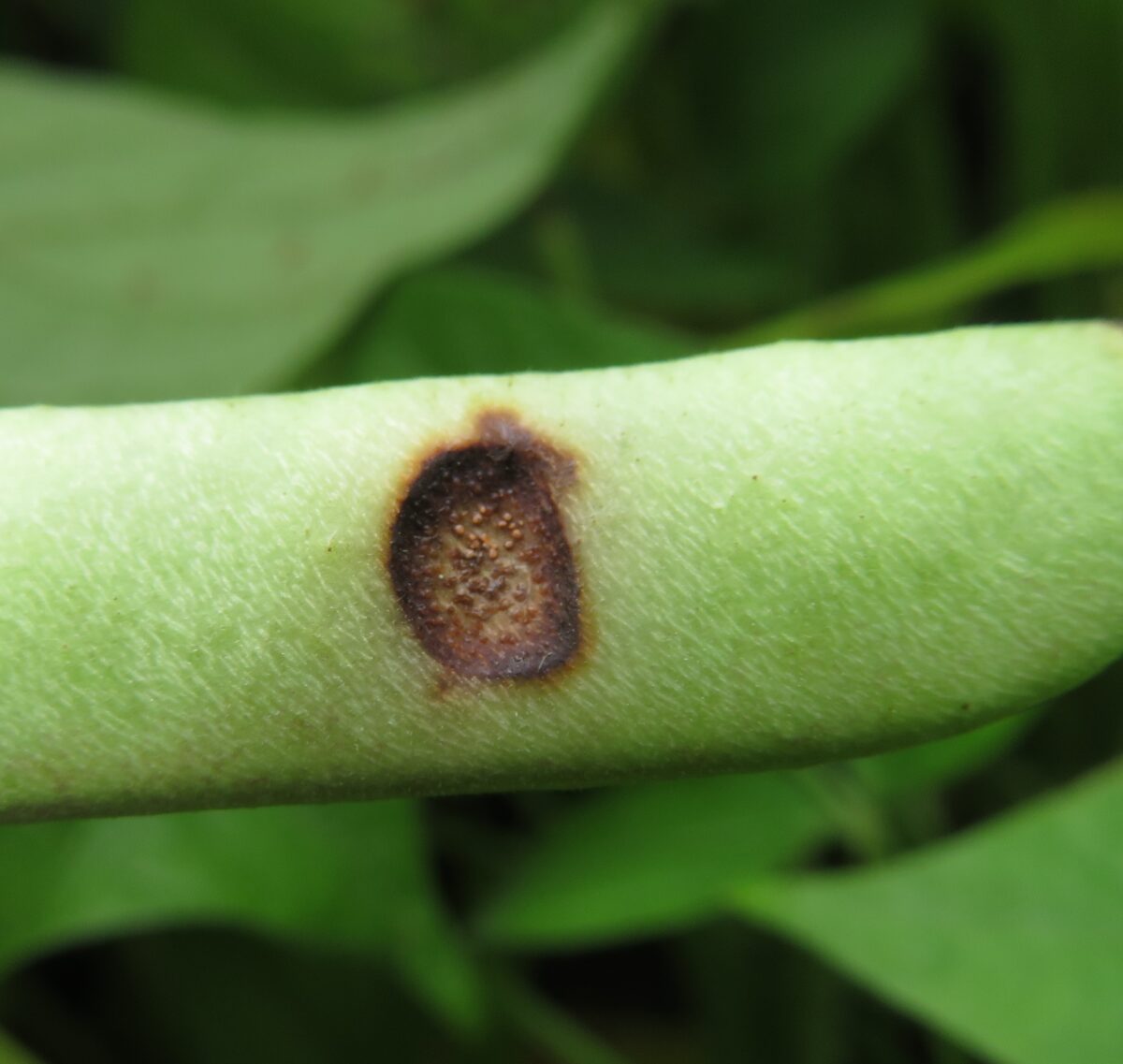Anthracnose (Colletotrichum lindemuthianum)
Incidence
Anthracnose is a significant and important dry edible bean disease in Ontario and has been managed with resistant varieties, clean seed and seed treatments. In fields where the disease does develop, as a result of new strains of fungus or from the use of infected seed, significant damage can occur.
Appearance
Plant symptoms include round, angular or oval lesions on the leaves, stems and pods. The pod lesions start as tan or rust coloured and become sunken or “crater-like”, and develop a distinct, raised black ring surrounded by a reddish-brown border. The centre of the lesion may have a gelatinous mass of tan or salmon-coloured conidia that dries to numerous small, black or brown granular spore masses. The veins on the underside of leaves are often red-brown or purple-red. Yield loss is due to early leaf senescence and plant death, shrunken seed and an increase in “pick” (seed that has disease lesions on the seed coat).
Disease Cycle
The fungus survives from year to year primarily as spores or lesions on seed. Planting clean seed is critical to controlling the disease. Once initial infection occurs in a field, the disease can be spread by the movement of farm machinery, animals and humans, both within the field and between an infected field and a non-infected field. Rainy weather favours this disease, as spores are splashed from diseased areas and carried in wind-borne water droplets or by surface water throughout the field. Wet conditions over a prolonged period of time can result in epidemics. Plant infection is favoured by temperatures of 13-26°C and humid or wet conditions.
There are several races (or strains) of anthracnose. All races of the disease cause the same plant symptoms. Historically, new races developed in Ontario about every ten years. When new races develop, resistant varieties used against past races will not be effective. Race 73 has been predominant in Ontario from 2004 until present (2020), and researchers are anticipating another race shift.
Management Strategies
To avoid anthracnose, select resistant varieties, plant disease-free seed and use a fungicide seed treatment. To see which varieties are resistant to anthracnose refer to www.gobeans.ca Variety Trial Report and the Variety Descriptions, or ask your bean seed supplier.
Incorporate infected bean debris into the soil after harvest and rotate beans with other non-host crops for at least 2 years. Keep equipment and crop scouts out of bean fields when the plants are wet.
If symptoms are observed, use of a foliar fungicide can mitigate spread of the disease within the field. Consult the OMAFRA Field Crop Protection Guide – Publication 812 for information on effective fungicides or consult anthracnose articles on this website.




